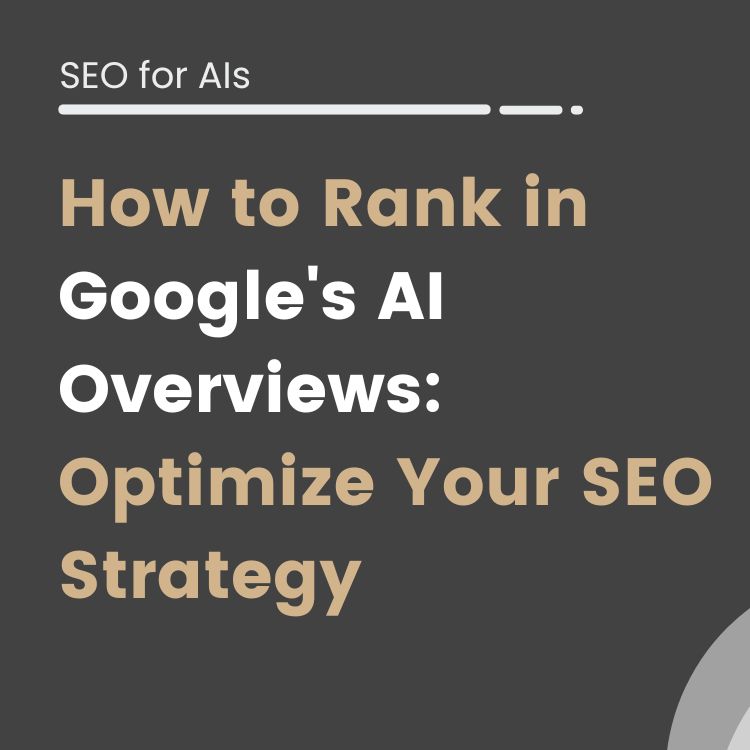In a recent study conducted by strategy consultancy McKinsey, 83% of CEOs expect marketing to become the main driver of the company’s growth agenda in the digital age.
The days when marketing was treated as a support center for the wider business are long gone.
Now, more than ever, CMOs and marketing managers are expected by management and the board of directors to take a proactive and leadership approach to the rest of the business.But of course, delivering on this promise is a challenge that involves embracing a new mindset:
- A new frame of mind.
- And a new marketing operating model (MOM).
- Getting the full support of the CEO to drive growth
- Adopting the CFO mindset to make marketing a value driver
- Partnering with the CTO to unleash the power of data
- Empower the HR Director to win the war for talent.
- The organization’s culture and way of working,
- The way you hire people in your team and how you enable them to remain productive,
- The use of available customer data in conjunction with IT to make decisions and fuel your campaigns.
- How you predict future demand behavior and capture trends.
- Focus on metrics and high-level performance goals;
- make sure everyone is aligned around them;
- be prepared to review your strategy regularly.
- and rely on specialized partners to develop new skills and execute complex tasks quickly.
-
https://www.mckinsey.com/capabilities/growth-marketing-and-sales/our-insights/modern-marketing-what-it-is-what-it-isnt-and-how-to-do-it
-
https://www.mckinsey.com/capabilities/growth-marketing-and-sales/our-insights/marketings-moment-is-now-the-c-suite-partnership-to-deliver-on-growth
-
https://www.mckinsey.com/capabilities/growth-marketing-and-sales/our-insights/the-new-growth-game-beating-the-market-with-digital-and-analytics
-
https://www.mckinsey.com/capabilities/growth-marketing-and-sales/our-insights/meet-your-new-mom
In this post we will try to summarize and shed light on what it means to be a good CMO today and what changes it implies.
To drive your company’s growth in the digital age, the marketing department needs to address not so much “what” but how it works, which means modernizing a specific set of skills and mental frameworks.

The CMO’s new mindset for success in the digital age:
In the digital era, a good CMO is able to meet the new needs of “modern marketing”.
But what does this mean?
Well, let’s first look at what we mean by Modern Marketing.
In reality, modern marketing puts all its effort into leveraging the company’s resources to deliver the best user experience possible and drive growth through it.
But to achieve such an ideal situation, according to a McKinsey study, the marketing manager must adapt a different framework approach to the traditional one. He or she must become a unifying figure between the functions of the marketing department and the rest of the company.
What Mckinsey firm calls a “unifier leader”.
This implies that the Chief Marketing officer must actively encourage the collaboration of his or her department with the rest of the company, starting with the CMO.
In this new mindset, the CMO makes sure that marketing has a prominent role for the other executives in the C-suite board, taking co-responsibility for the company’s economic performance and helping to meet the needs of management.
These are none other than achieving the expected results while contributing directly to growth: growth marketing.
But to drive growth from marketing, marketing managers must not only work collaboratively with other C-suite colleagues as an equal partner, adopt the language and mindset of senior executives, but also articulate their entire team to create productive and collaborative relationships between members of different departments.
Only then can you meet their needs and ensure that the entire organization understands marketing’s new role. But how can you adopt this mindset, and successfully drive this transformation? Let’s look at the next point:
How to become part of the solution:
Mckinsey’s studies on this matter suggest that to reach the level of a functional unifier marketing leader that delivers higher growth you must work on:
All this is not easy but there are some guidelines you can follow:
Enlisting the CEO’s support to drive growth.
This should be your first step. The CEO of your company should be your main ally. Having the CEO’s trust in your marketing work is essential for you to become a growth machine for your company.
And this support must be public and explicit.In other words, it must be like a declaration of love shouted from the rooftops.This is the way to gain authority for marketing-led actions and to back up your decisions.In return, you, as marketing manager, must bring a deep understanding of the customer and the opportunities that present themselves to translate them together into short and long-term initiatives that ensure results.
This way, you will be able to provide early and clear insight into shifts in demand that will impact the business and bring to the CEO your deep understanding of the customer journey to help set the right strategy.
Adopting the CFO mindset to make Marketing an Asset to your Business
The marketing-finance animosity relationship is well known. The CFO of any company is often the biggest critic of marketing.
This remains unchanged for decades. The reason for this is easy to explain.
Marketing expenditure is difficult to justify. Because it is not easy to establish a direct cause-effect relationship between higher spending on marketing campaigns and better results.
Therefore, to bridge this gap, we advise you to work on incorporating financial indicators into your reporting. In such a way that you provide quantitative insight as well as a link between income and expenses for marketing actions and campaigns.
In this way, proactively manage to reach agreements with the CFO to establish the relevant KPIs that you must transmit and document through advanced analysis and business cases the financial metrics that allow you to determine whether or not the objectives and commitments achieved have been reached.
Don’t just adopt financial jargon, look for common ground and ask directly what they need from you when reporting on progress and active campaigns.
This will make it easier to get them on your side by making it clear how the marketing function adds value and underpins the growth of the business as a whole.
You will then be able to consolidate a solid budget with which to fund the full range of actions to be taken and ensure that you are not the first to be cut when market turbulence hits.
Partnering with the CTO to harness the power of data
Modern marketing requires good data to facilitate agile decision making.
However, developing the full capabilities of data analytics is not possible without the ongoing support of IT.
As different platforms coexist in a company, it is common for data to be scattered across different systems in the company. Therefore, data must be centralized and easily accessible by marketing staff.
Therefore, the support of the CTO is essential to integrate data to understand customers at a granular level, personalize interactions and predict market behavior.
In fact, you cannot become a customer centric company without IT.
The ability to advance the digital transformation of marketing is only possible by getting the CTO to share the marketing vision and translate it into requests and budgets to the director’s board along with you.
Empowering the CHRO to attract talent
This is another critical point. Given the current complexity of the different roles needed to articulate digital marketing, new strategies are needed to attract, retain and generate talent.
In fact, there is a huge gap today between the skills needed to run modern marketing and what the job market offers in terms of candidates.
There is a critical shortage of credible specialists.
Relying on legacy recruitment and training programmes is not enough.
You, as a marketing manager, will need to work with HR to make clear your recruitment needs and see how the recruitment process, internal training and career plans fit in.
Today more than ever, companies are lost in a cesspool of time and resources to recruit talent that they can’t find or find difficult to identify and then retain.
Part of the opportunity to solve this problem is to reach agreements with universities and specialized training centers, but this is not enough. Some skills are so new that there is still no formal training. This is why the CMO and HR must work to fill this gap.
At this point, the creation of ad hoc internal training programmes is key for teams to develop the necessary skills to keep pace with market changes and decongest the recruitment process.
Creating your MOM or operational marketing model
We have already talked about the Chief Marketing officer’s new mindset but now we needt o talk about the new operational marketing model (MOM) mentioned at the beginning of this post.
Setting it up is not easy and Mckinsey talks about up to 4 enablers.
We, agree with the strategy consultancy, like to focus the model on achieving one goal: to get to work under the prism of “agile marketing” to accelerate marketing operations.
If you focus on this objective you will see how you will have to implement changes in:
However, scaling to work in an ‘agile way’ requires understanding and involving other departments such as IT, finance, legal, HR and even external providers such as marketing agencies to help execute tasks and achieve results.
At this point, support from your agency can be crucial to fill gaps in execution capacity or planning ability.
We see this as the only way to keep pace in a market where change is accelerating.
Leveraging your agency to boost your growth
One of the services we provide at iSocialweb is internal training for our clients’ marketing teams.
On many occasions, an organization needs to quickly and solidly acquire certain skills that the members of the marketing team lack. Undoubtedly, in-house training is a solution to this problem.
And together with the advice of our agency, they leverage their marketing operations.
That’s why, when we work with our clients, we develop training plans tailored to their needs in order to articulate new skills in digital marketing teams, reducing implementation times and accelerating their productivity.Thus, this helps any CMO to accelerate the digital transformation of operations and move forward safely in the implementation of the new MOM.One of the key determinants of a CMO’s success in modern marketing is their ability to empower their team members with the necessary skills and tools to move forward in the new competitive environment.
Bottom Line
The role of the CMO has never been more relevant.
CEOs want, seek and demand that CMOs act boldly to lead their department to drive growth, and they need you to take a leading role in implementing ambitious ideas, building bridges with teams in other areas and transforming the relationship with marketing for other executives.
That’s why a new operating model for marketing needs to be managed.
But marketing managers can’t do it alone.
They need the collaboration of the rest of management and the explicit support of the CEO.
Moreover, the pace of change is frenetic, especially with the rise of data and technology.
It is therefore essential for any CMO to adapt to change.
According to McKinsey some of the keys to being a good CMO in 2023 involve:
At iSociaWebl we have a long experience boosting our client’s capabilities through our digital marketing services.If you follow these tips, you are surely on the right track to become a successful CMO in the coming years.
At iSocialWeb we are ready to help you with that.
Here are some additional resources to learn more about Modern Marketing and the new CMO’s role
Frequently Asked Questions
How do you become a successful CMO?
There are many paths to success as a chief marketing or corporate communications officer. However, one of the key qualities that distinguishes a successful CMO from the rest is their ability to be a unifying figure who is able to work closely with the CEO and align the objectives of the entire marketing department towards the growth of the company’s business. To do this, he or she must be able to drive change by working closely with other C-suite executives such as the CIIO, while at the same time leveraging the capabilities and tools of his or her team.
What qualities should a CMO have?
Chief Marketing Officers today must become unifier leaders who are responsible for directly contributing to the growth of the company and that implies a change in the mindset of all the players in the marketing department and a new model or way of operating that deals with how to execute marketing tasks and not so much with what is has to be done.
Alvaro Peña de Luna
Co-CEO and Head of SEO at iSocialWeb, an agency specializing in SEO, SEM and CRO that manages more than +350M organic visits per year and with a 100% decentralized infrastructure.
In addition to the company Virality Media, a company with its own projects with more than 150 million active monthly visits spread across different sectors and industries.
Systems Engineer by training and SEO by vocation. Tireless learner, fan of AI and dreamer of prompts.






